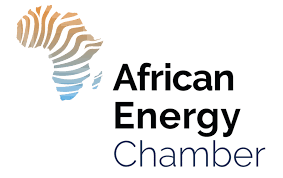
For regular visitors to Egypt, Old Cairo rarely changes. Home to the bank’s headquarters for decades, the constant background noise of traffic, the hustle and bustle of trade, narrow streets steeped in history and culture, are in stark contrast to the modern, rapidly developing and evolving city of New Cairo where businesses like Visa have set up their head offices.
In many ways, the local payments industry represents a similar mix of traditional transactions with rapid change underway, especially in card issuing and merchant acquiring.
This article aims to give the reader a flavour of the vibrancy of the local payments industry and of Egypt’s capital, home to over 10m people making it the 3rd most populous city in Africa or 23m when adding in Giza and taking the broad metropolitan area – combined making it the largest city area in Africa and 5th globally, whilst Egypt has 118m people making it the 3rd largest country by population in Africa after Nigeria and Ethiopia.
Old Cairo: A UNESCO World Heritage area offering a glimpse into history encapsulates Egypt’s rich heritage, with remnants of ancient civilisations, such as the Coptic Christian enclave and archaeological sites dating back to Roman times and early Islamic architecture. Opening on 3 July 2025, the Grand Egyptian Museum will be the world’s largest archaeological museum.
New Cairo: established in 2000 and about a 30-to-40-minute drive from Old Cairo if traffic is flowing (or 90 minutes during rush hour) feels more like Dubai and a complete contrast representing modern development and urban planning to alleviate congestion in central Cairo. Here it feels dust free with wide boulevards, open green spaces, lots of glass-fronted buildings and commercial centres.
Payment Industry Trends in Egypt
The payments landscape in Egypt is undergoing significant transformation, influenced by both technological advancements and changing consumer behaviour.
Digital adoption is on the government’s agenda, especially when it comes to SMEs (small medium enterprises) which have seen a fast-growing fintech scene. On the agenda are efforts to target the underbanked and drive mobile digital first propositions, which accelerated after the pandemic. Alongside this has been a notable increase in card issuance owing to the growing acceptance of digital payments. Banks are launching within the market digital payment products such as contactless cards and mobile wallets.
Even more recently, in late 2024, saw Apple Wallet enter the market and with the three largest bank issuers launched tokenisation. This has been hugely popular, and take-up has been high. So much so that the remainder of the banks are lining up to also tokenise.
On the acquiring front, there has been a spate of M&A activity to consolidate and drive efficiency, so the focus continues to be price driven around rates and merchant retention efforts from value-added services. But new payment methods like QR codes and InstaPay have taken off.
Despite this market push, Egypt’s 34 banks have been issuing cards for decades and there is around 25,000 ATMs. Most of the issued cards are debit or prepaid in nature. The high inflation caused by crises like Ukraine has led to low usage of credit cards. As a foreigner visiting, it is surprisingly a country where you feel you need cash. I haven’t been to an ATM to withdraw cash for I can’t remember how long , and whilst I sought to resist going to see if I could survive digitally as I have easily done in Ethiopia, Kenya, Tanzania etc, the challenge to find a restaurant that would take a card almost beat me. Egypt is surprisingly still very heavily cash driven.
Change is taking place though. According to Mastercard’s New Payment Index 2022, 67% of Egyptians increased their use of digital payment methods during the COVID-19 pandemic.
On my visit to market, I got to spend time with leading payments company EBE (Egyptian Bureau for Engineering) which has played a key role in over 40 years to help with card production and personalisation, accounting for circa 95% of the cards in circulation, they have also deployed many of the POS terminals and ATMs in market. Talking with their team, younger consumers now prefer mobile wallets and contactless payments as safer and more convenient alternatives.
Initiatives like the national domestic payment scheme, Meeza, support this shift offering prepaid cards to enable users to engage in cashless transactions while still providing access to cash withdrawals when needed.
Digital payment platforms are emerging as key players in this transition, allowing consumers to settle bills and make purchases online. Some of the more popular are:
1. Fawry: I believe the largest and most popular digital payment platforms provide a wide range of services, including bill payments, mobile top-ups and online shopping. Customers access Fawry through its app or physical kiosks, making it versatile, and its extensive network ensures broad acceptance among merchants and service providers. MyFawry extends into an online platform to make both online and offline payments and is now widely accepted across different sectors, including utilities and government services.
2. Easycash: allows users to conduct transactions and money transfers via a mobile app. It supports payments through QR codes or by entering a merchant’s phone number, facilitating everything from bill payments to online shopping. With a user-friendly interface and loyalty programmes that reward frequent users, its popularity is growing fast.
3. Halan: is a digital wallet primarily used for transport and food delivery services, but it also supports various online purchases. Users make payments by scanning QR codes or entering merchant details, making it a convenient cashless transaction option.
4. InstaPay: enables instant real-time payment transactions through a mobile app linked to users’ bank accounts or credit cards. Enabling secure payments for bills and online purchases, it enhances convenience by providing detailed transaction histories and expense tracking.
5. Sympl: facilitates payments for utilities, online shopping and person-to-person transfers through its mobile payment platform. Users manage their finances through the app, which allows payments via QR codes or linked accounts.
6. ALAHLI E-Wallet: provided by the National Bank of Egypt, allows smartphone users to perform transactions supporting payments at various merchants and facilitating P2P fund transfers between wallet users.
7. Masary and Aman: are both notable digital payment platforms catering to a wide range of consumer needs with user-friendly interfaces designed to enable cashless transactions for utilities, government services and retail purchases.
The newest of these and probably the one with the fastest future growth potential is InstaPay, which also has a strong secure payment environment, using 128-bit encryption to protect data transmitted through its platform. The platform incorporates 3D Secure technology, which adds an additional layer of security during online transactions so that cardholders verify their identity through a one-time PIN or password and two-factor authentication (2FA), which adheres to the Payment Card Industry Data Security Standard (PCI DSS).
Will Egypt trail in the digitalisation wake of other African countries?
Possibly. Egypt has certainly had a huge boost being one of the first batch of African countries to regulate for a major X-Pay Wallet deployment, and with Apple Pay the deployment has gone exceedingly well. But other African governments and Central Banks are pushing regulation that incentivises the digitalisation of cash, for example Libya, others are pushing a more aggressive digital issuance drive like Ethiopia, some have already implemented innovative National QR code schemes like Kenya and Tanzania and some, like Tanzania, are even offering tax incentives to encourage higher end NFC-enabled devices like smartphones and wearables to come into the market which, with a virtual card issuing push and tokenisation of this, will help countries leapfrog the resistance to cash.
From my recent visit and attempts to find ways to pay by card, Egypt possibly needs an additional stimulus to encourage certainly older people and SMEs to embrace digital payments. However, Egypt is a huge market and therefore the opportunity is also large. Once a tipping point is reached with digital payment adoption, usage will accelerate rapidly.
What is definitely at play is a wide range of options. This ubiquity will mean that banks need to orchestrate several different methods of payment for its customers. With most banks having bought their core card management systems or payment switches over a decade ago there is a local need by the banks to protect these core (legacy) technologies. Whilst several options may exist, the most cost / time economic solution also maximising flexibility, agility and the reduction of operational risk when deploying new products is payment fabric.
Payment Fabric enables digital first mobile friendly payment experiences without replacing existing systems
Payment fabric provides a modern microservice approach to deploy new features without replacing existing investments.
This is where Stanchion’s Payment Fabric provides a critical advantage. Our modular and adaptive technology bridges the gap between legacy banking infrastructure and next-generation digital payment experiences. By enabling seamless integration across banking platforms, card networks and digital wallets, we empower financial institutions to innovate at speed, optimise costs and deliver the frictionless digital experiences that modern consumers expect.
To remain competitive, banks must invest in robust digital infrastructure, forge strategic partnerships and prioritise customer-centric solutions that match the convenience of digital payments. With a global footprint and deep Middle East and Africa market expertise, Stanchion is uniquely positioned to support this transition — helping banks build scalable, future-ready payment ecosystems that align with Egypt’s changing and dynamic economy.
Stanchion is ready to collaborate and shape the future of payments with Egyptian Banks and Fintechs.
This piece is a market view from Norman Frankel, Chief Growth Officer following his recent market visit




